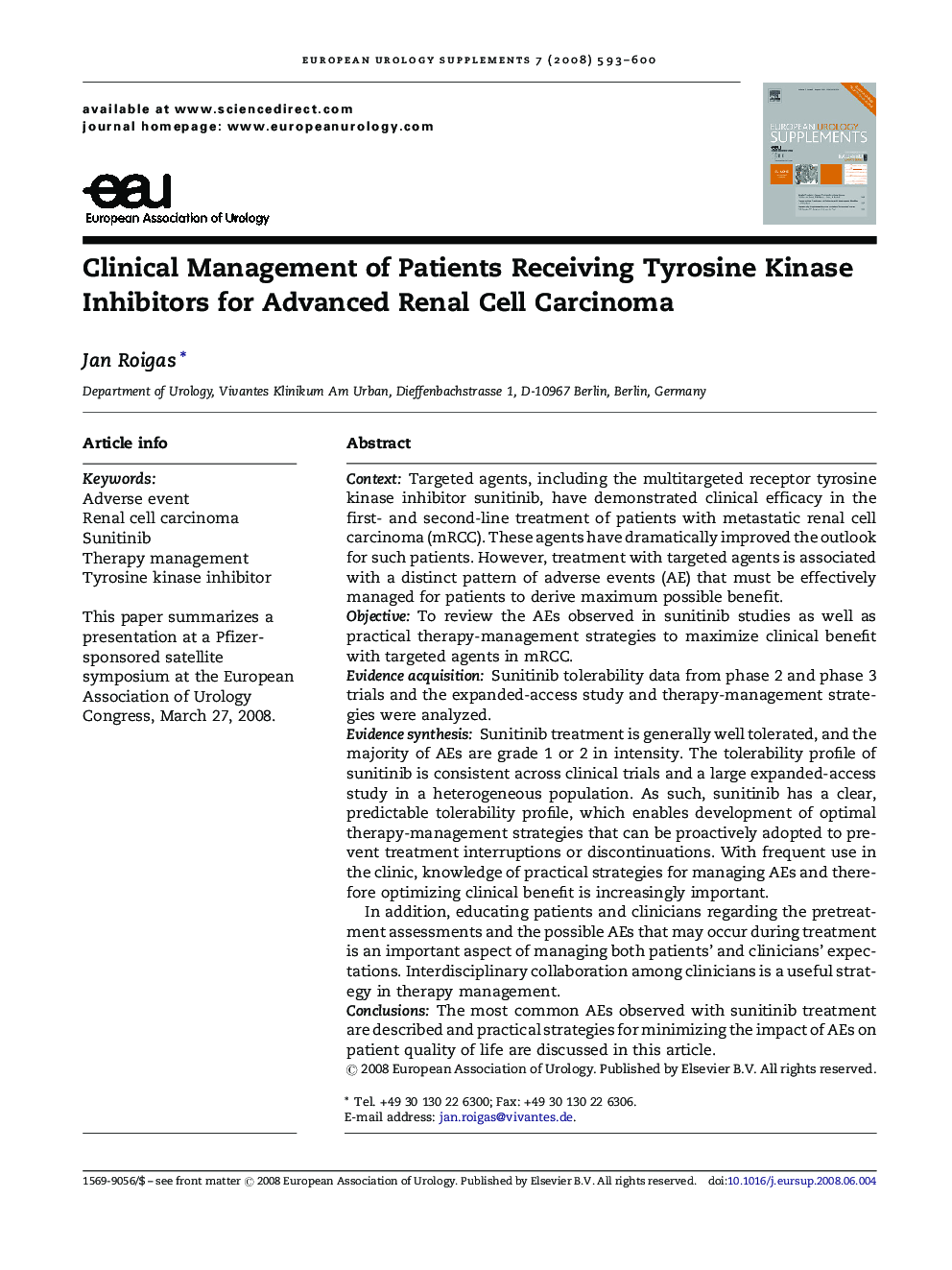| Article ID | Journal | Published Year | Pages | File Type |
|---|---|---|---|---|
| 3930907 | European Urology Supplements | 2008 | 8 Pages |
ContextTargeted agents, including the multitargeted receptor tyrosine kinase inhibitor sunitinib, have demonstrated clinical efficacy in the first- and second-line treatment of patients with metastatic renal cell carcinoma (mRCC). These agents have dramatically improved the outlook for such patients. However, treatment with targeted agents is associated with a distinct pattern of adverse events (AE) that must be effectively managed for patients to derive maximum possible benefit.ObjectiveTo review the AEs observed in sunitinib studies as well as practical therapy-management strategies to maximize clinical benefit with targeted agents in mRCC.Evidence acquisitionSunitinib tolerability data from phase 2 and phase 3 trials and the expanded-access study and therapy-management strategies were analyzed.Evidence synthesisSunitinib treatment is generally well tolerated, and the majority of AEs are grade 1 or 2 in intensity. The tolerability profile of sunitinib is consistent across clinical trials and a large expanded-access study in a heterogeneous population. As such, sunitinib has a clear, predictable tolerability profile, which enables development of optimal therapy-management strategies that can be proactively adopted to prevent treatment interruptions or discontinuations. With frequent use in the clinic, knowledge of practical strategies for managing AEs and therefore optimizing clinical benefit is increasingly important.In addition, educating patients and clinicians regarding the pretreatment assessments and the possible AEs that may occur during treatment is an important aspect of managing both patients’ and clinicians’ expectations. Interdisciplinary collaboration among clinicians is a useful strategy in therapy management.ConclusionsThe most common AEs observed with sunitinib treatment are described and practical strategies for minimizing the impact of AEs on patient quality of life are discussed in this article.
